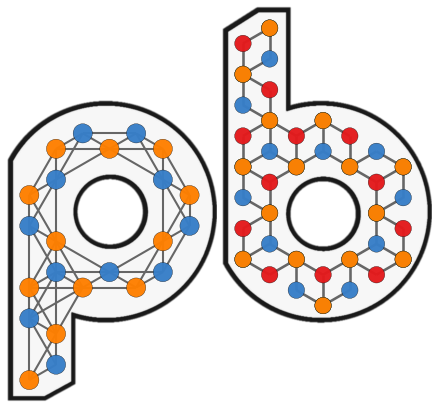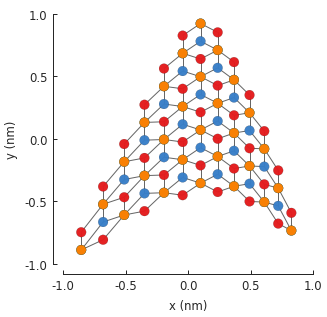
Pybinding is a scientific Python package for numerical tight-binding calculations in solid state physics. If you’re just browsing, the Tutorial section is a good place to start. It gives a good overview of the most important features with lots of code examples.
As a very quick example, the following code creates a triangular quantum dot of bilayer graphene and then applies a custom asymmetric strain function:
import pybinding as pb
from pybinding.repository import graphene
def asymmetric_strain(c):
@pb.site_position_modifier
def displacement(x, y, z):
ux = -c/2 * x**2 + c/3 * x + 0.1
uy = -c*2 * x**2 + c/4 * x
return x + ux, y + uy, z
return displacement
model = pb.Model(
graphene.bilayer(),
pb.regular_polygon(num_sides=3, radius=1.1),
asymmetric_strain(c=0.42)
)
model.plot()

Within the pybinding framework, tight-binding models are assembled from logical parts which
can be mixed and matched in various ways. The package comes with a few predefined components:
crystal lattices, shapes, symmetries, defects, fields and more (like the
graphene.bilayer() lattice and the regular_polygon()
shape shown above). Users can also define new components (just like the asymmetric strain above).
This modular approach enables the construction of arbitrary tight-binding models with clear,
easy-to-use code. Various solvers, computation routines and visualization tools are also part
of the package. See the Tutorial for a walkthrough of the features.
The source code repository is located on Github where you can also post any questions, comments or issues that you might have.
Reference docs